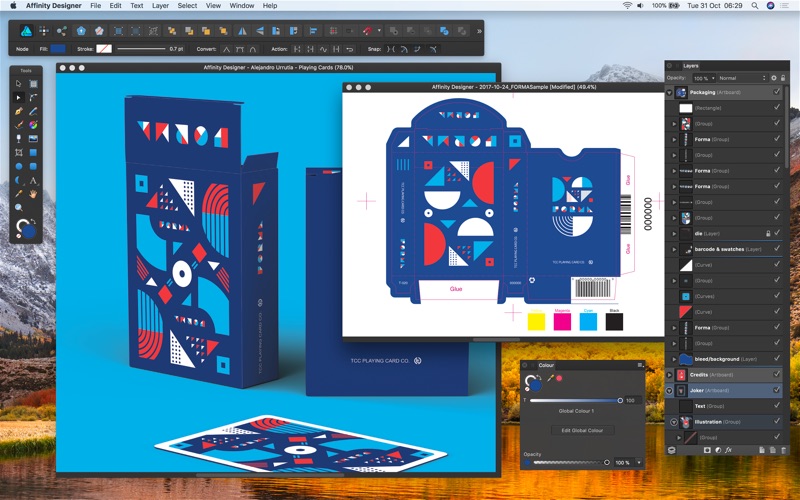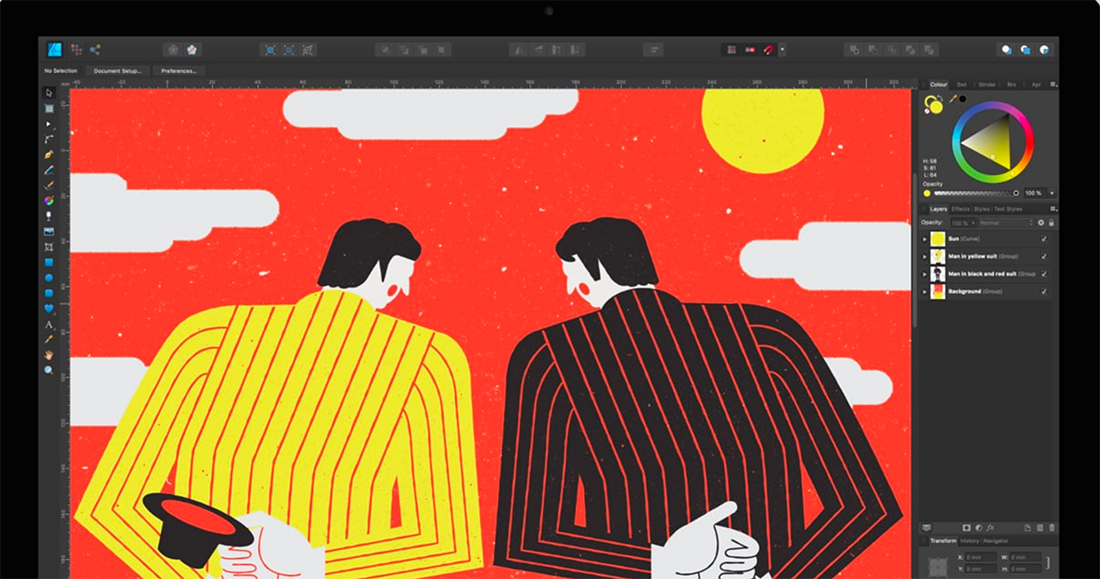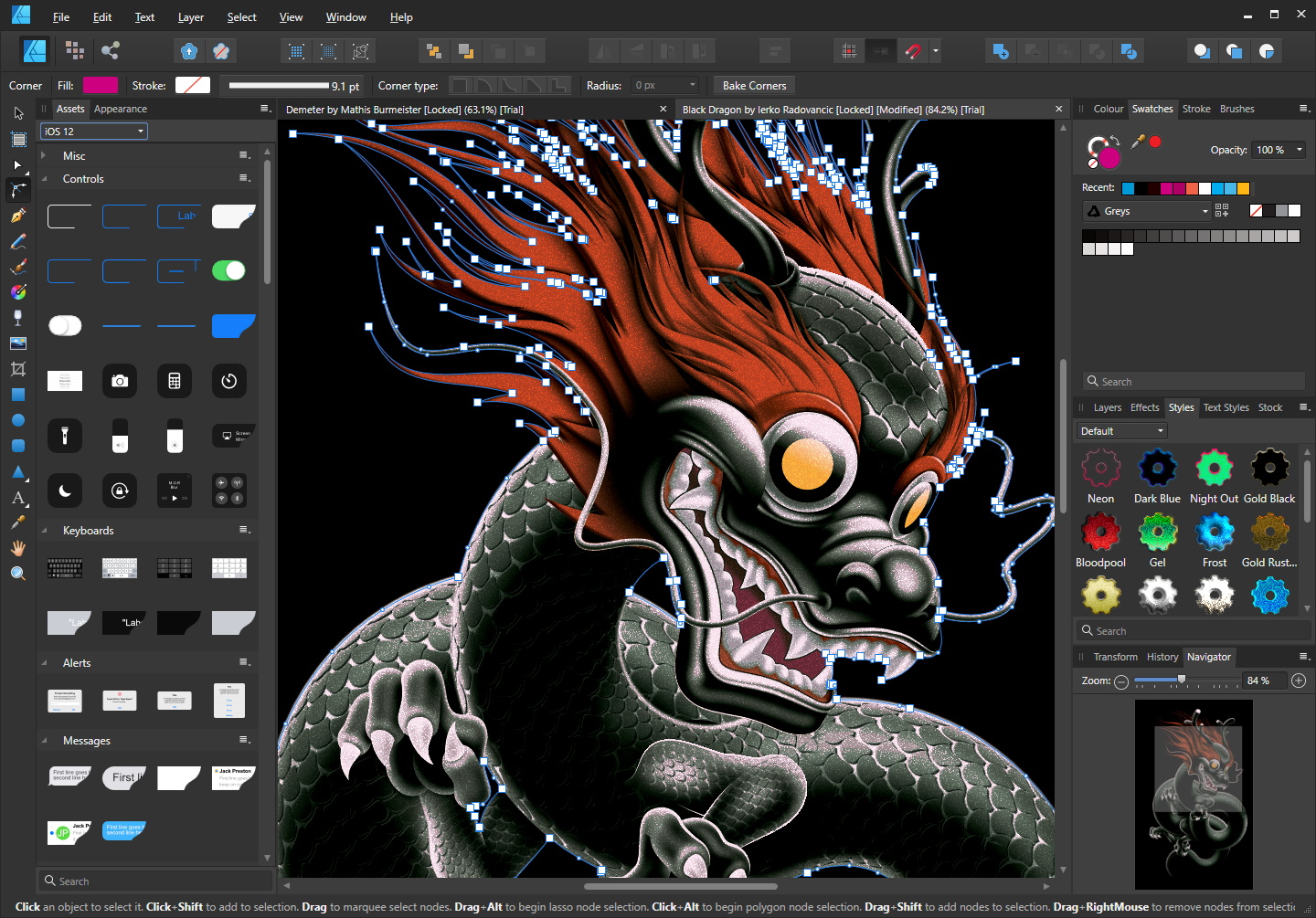
- AFFINITY DESIGNER FREE STYLES TRIAL
- AFFINITY DESIGNER FREE STYLES MAC
- AFFINITY DESIGNER FREE STYLES WINDOWS
AFFINITY DESIGNER FREE STYLES MAC
If you keep the History panel open & refer to it when you are working with the Mac version, you may notice that sometimes what you consider to be a single step is recorded as two steps as far as the app is concerned. Regarding undo, it steps backwards through each step the app records. Sorry to see you are having so many problems with Affinity Photo. Is it just one particular document where the issue occurs, or does the same happen on a completely new document as well? If you can reproduce it on a new document, it will probably be better to upload that instead, with 'File > Save History With Document' applied.


Click 'Stroke' and set it to 'None'Īs for getting to the root cause of the issue, I don't think I'll be of much help, however you could upload a sample file and I'll see if I can reproduce it. If you just want to get the file you're working on to a state where you can continue working without the style applied, you could try the following to see if it removes the Style:ġ) Select the layer with the applied StyleĢ) As previously mentioned in Post No.3, if it has an fx symbol on the right of the layer, click on it and untick all the effects, including making sure the 'Fill Opacity' at the bottom is set to 100% also.ģ) Select the Rectangle tool, then in the top context bar click 'Fill' and set it to 'None'. Together with the part about the Style being all the way back at the beginning of the History panel, to me sounds pretty odd. I'm trying to think of a scenario where 'Edit > Undo Apply Object Style' won't work by design, but I can't think of one at the moment. Still the same problem I'm having in this video (undo does nothing, redo multiplies the effect) I just held down control when I reopened and reset everything. In fact, the one thing I hadn't previously tried was going through History.and the style is applied almost all the way back the beginning.on changes I'd made before I ever even opened Styles in the first place. Today, it is.but undoing it does nothing.and when I redo, it multiplies the effect. Last night, "undo apply object style" wasn't even an option under Edit in my menu. I'm going to go through and try each of your suggestions.but something is definitely wrong with the program on my end. Then you can click on it whenever you want to change the object to one of your own preset 'default' Styles. Two pixel black stroke, with a white fill), then right-click on it and select 'Create Style' (or Edit > Create Style, from the top menu). To do this, set an object how you want it (I.E. Or if you want, you can create your own Style.

This will revert it to the default setting that's set for that object. Go to the History panel and move back a step to before 'Apply Object Style'Īlternatively, if you want to get rid of the applied style at a later stage where isn't practical to use Undo, using the Move Tool you can select the object that has the Style applied to it and then go to Edit > Defaults > Revert. Edit > Undo Apply Object Style, from the top menu Ctrl/Cmd + Z keyboard shortcut key to undo the style However you should be able to do the following. Maybe after resetting using one of the three methods mentioned above, it will start working correctly. I'm not sure why it isn't working for you as you should be able to undo applying a style.
AFFINITY DESIGNER FREE STYLES TRIAL
I encountered this issue during a free trial of Affinity and it was my #1 reason for not buying it originally. Example: if I click on a Style to see how it looks, there's no way to undo the effect. However, in case you need raster version, you should be in “Pixel Persona” mode, as it’s the only way to make these brushes appear.1) I cannot undo certain things. The brushes you have added will always be available in the Brushes Panel, so you won’t need to follow all those steps each time to use the same tool.
AFFINITY DESIGNER FREE STYLES WINDOWS
In case you are a Windows user, you can do the same process via Explorer. When you see it on your screen and the cursor is changed, you can release the mouse button and the confirmation message will appear on the screen. If you are using a device with Mac OS, you can use Finder to upload the Affinity Designer brushes, as it will help you find the location of the afbrushes file you need.Don’t forget that those items have to be in. Then all you need to do is choose the files you want to upload and work with.



 0 kommentar(er)
0 kommentar(er)
